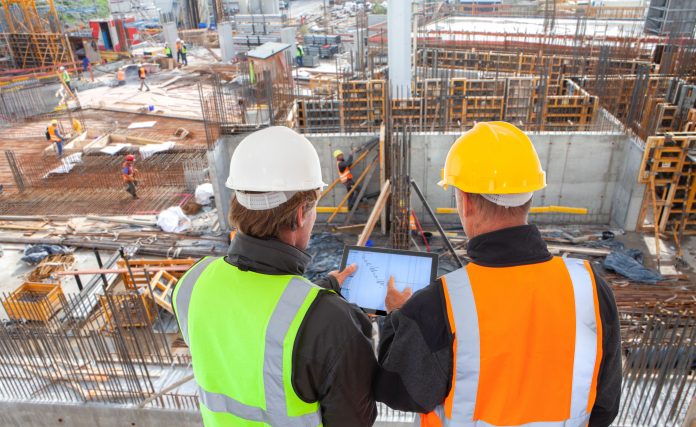Elecosoft launches collaboration cloud for improved project management
2021 has been a year of recovery for the construction industry but while demand for properties is rising, market challenges make it harder than ever to run an efficient, profitable construction project.
With materials in short supply and prices at a premium, property development still faces severe disruption. And only companies that work closely and collaborate effectively – both internally and with contractors and vendors – will be able to keep delivering projects on-time and on-budget.
Demand is rising – but so is the cost of materials
The good news for the construction industry is that demand for property has remained buoyant during the pandemic, even with a lack of job security impacting mortgage lending terms.
Commercial property development is also showing signs of pandemic recovery, as sectors reopen and virtual workforces return to reality. The hospitality and leisure industry is now trading at full capacity following several periods of restriction, while the remote working movement is coming to an end.
But while consumers and employers are embracing a sense of normality, construction companies can’t afford to relax just yet. The impact of the pandemic and other political and legislative events – such as Brexit – are still affecting the price and availability of building supplies, which is impacting the progress of construction projects.
Supply chain challenges, commercial driver shortages and unprecedented demand mean that many materials – from timber and steel to cement and paint – are subject to long lead times or completely unavailable.
Control project costs instead of passing on price increases
With demand for housing high, one way to offset the increasing cost of construction is to raise property prices. But there is a limit to how much people are willing to pay.
Considering the risk of raising prices, construction companies have one other option: to keep the cost of production as low as possible. And this is best achieved through strong teamwork.
Contractors and developers may be at the mercy of the market when it comes to the price and availability of materials, but there’s still an opportunity to save money on project management costs by helping stakeholders to collaborate more effectively.
At the moment, many construction projects are run inefficiently. Project managers don’t have full visibility over what is happening at any point in time or the communication systems in place to issue quick updates on how things are progressing and receive on-site feedback. As a result, delays can go unnoticed for days (even weeks) and their impact isn’t fully realised until projected costs start to rise. One small setback can easily snowball into an expensive delay, which can’t always be passed on to the customer.
So, how can construction companies collaborate more closely with everyone involved in their projects to track progress in real-time and solve problems quicker? The answer lies in integrating planning, communications and operations using construction project management software.
Getting project teams on the same, real-time page
Currently, one of the critical issues with running construction projects is getting (and keeping) everyone on the same page. It’s very easy for messages to get misinterpreted or forgotten, or for on-site feedback to be delayed until there’s a catch-up meeting – by which point the problem has impacted progress.
Equally, without clear communications, contractors and labourers end up basing their plans on out-of-date information. For example, scheduling the next phase of a build around a delivery of materials that has been delayed by availability issues.
Many construction companies will have already taken steps to solve these challenges, such as investing in digital scheduling technology, but it may take several pieces of software to manage a project and information can easily fall through the gaps. Especially if their chosen software isn’t mobile-friendly, as it’s difficult for on-site teams to make real-time updates.
Additionally, some project management solutions don’t track and analyse the impact of changes on overall timeline and budget. If something changes – such as a shipment of materials being delayed – it’s up to the project manager to spot the problem and re-plan the schedule to limit its impact on final delivery. And even then, their software may not calculate the cost of those changes and how they affect the project’s overall profitability.
Enabling collaboration through one piece of construction software
In the ever-moving world of construction, the most effective way to keep projects moving forward without eroding bottom line is to manage every aspect – including people, materials and profit margin – in one place.
Elecosoft has recognised this need for integration, which is why we’ve launched Powerproject Collaboration Cloud: a collection of our market-leading project management software in one monthly subscription which combines three of our most popular solutions in our portfolio – Powerproject, Site Progress Mobile and Powerproject Vision. Allowing construction companies to plan, track, manage and report on projects in one place, in real-time.
It’s cloud-based, meaning every stakeholder can access information anywhere, anytime – including on-site – to keep developments progressing efficiently. And by combining all three solutions into a single package, it’s more cost-effective than buying everything separately.
But while there are clear financial benefits to subscribing to a software bundle, Powerproject Collaboration Cloud has been primarily developed to help construction companies run projects more efficiently and profitably. Because Elecosoft understands that in an unpredictable, tight-margin market, collaboration is critical to the construction industry’s economic success.
Learn more about Powerproject Collaboration Cloud or book a free demo.
Elecosoft
Tel: +44 (0) 1844 261700
Twitter: @elecosoft
Please note: this is a commercial profile.














